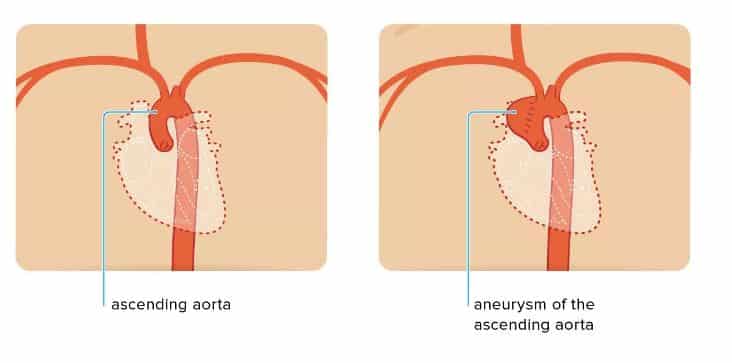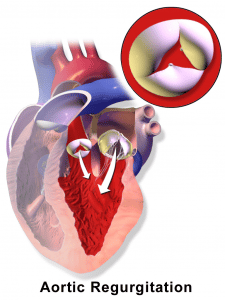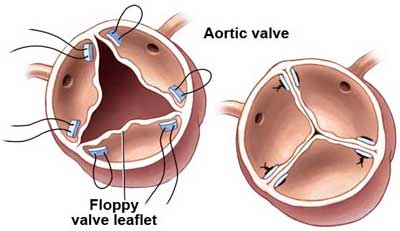Aortic valve repair is a surgical procedure that involves the reconstruction of both structure and function of the aortic valve. This surgical procedure is also known as aortic valve reconstruction.
It is different from aortic valve replacement, a procedure in which the dysfunctional aortic valve is replaced with an artificial heart valve. In cases where the aortic valve has been destroyed beyond repair, a replacement will be the only realistic option.
Indications for Aortic Valve Repair
Aortic valve repair is necessitated by certain defects of the aortic valve. The indications for aortic valve repair are as follows:
Congenital Aortic Stenosis – Aortic stenosis refers to a condition that obstructs blood flow between the left ventricle and the aorta. There are a variety of causes, including muscular obstruction below the aortic valve, obstruction at the valve itself, or aortic narrowing immediately above the valve.
Congenital aortic stenosis (at birth) may be treated by aortic valve repair as there is no calcification or shrinking of the aortic valve. Conversely, acquired aortic stenosis (in life) may only be treated by valve replacement.
Aortic Regurgitation – This condition is also known as aortic insufficiency and is the leaking of the aortic valve that causes blood that is ejected by the heart to flow in the reverse direction back into the left ventricle of the heart. The implication is that the cardiac muscle is forced to work harder than normal.
The symptoms of aortic regurgitation include dyspnea (shortness of breath), palpitations, angina pectoris (chest pain), cyanosis, etc. If not treated on time, aortic regurgitation may become life-threatening. Aortic valve repair is a surgical treatment for severe acute aortic regurgitation.
Ascending Aortic aneurysm

The aorta is the largest blood vessel in the body. The ascending aorta is part of the aorta that is closest to the heart. An aneurysm is a bulge that forms in the wall of an artery. It happens when the artery wall weakens. Aneurysms anywhere in the body are dangerous because they can rupture and cause massive internal bleeding. An ascending aortic aneurysm is especially serious as a rupture in this part of the body can be life-threatening. Aortic valve repair becomes necessary for the treatment of ascending aortic aneurysms.

ascending aorta aneurysm
Surgical Techniques of Aortic Valve Repair
The goal of aortic valve repair is the restoration of a normal form of the aortic valve leading to a near-normal function of the valve. A carefully conducted transesophageal echocardiogram during the operation and before the repair will be important to define the exact deformation of the aortic valve.
Aortic valve repair is usually carried out as an open-heart surgery due to the complex geometry of the aortic valve. The minimally invasive technique will limit the ability to precisely judge the form of the aortic valve and hence a higher uncertainty regarding the function and durability of aortic valve repair. The patient is usually connected to the heart-lung machine via the aorta and right atrium. The heart is arrested through cardioplegia, and the structure of the aortic valve is carefully analyzed.
The results of this analysis including the possible presence of an aortic aneurysm then determine the plan for the repair procedure which must be individualized for every patient.
Aortic Valve Stenosis
As stated earlier, congenital aortic valve stenosis can be treated by aortic valve repair in the absence of relevant calcification. In this scenario the aortic valve will almost always be unicuspid; the valve configuration must be altered as part of the procedure to improve the opening of the valve. Because of the unicuspid form of the valve the repair concept will be similar to that of the regurgitant unicuspid valve.
Repair Concept
The traditional treatment of congenital aortic stenosis is balloon valvuloplasty or surgical commissurotomy. Both approaches will put the narrowing of the valve into consideration. Also, they will lead to a variable degree of aortic valve regurgitation. In both approaches, some of the valve tissue is opened and a bicuspid valve is created which leads to near-normal function of the aortic valve.
Operative Technique
After careful evaluation of the aortic valve, a repair plan is determined. The most reproducible concept involves the creation of a bicuspid aortic valve with 2 normal commissures and 2 cusps. The tissue of the aortic valve is removed from the aorta in places where it is abnormal. The location of the second commissure of normal height is determined; using a patch or the original cusp tissue the cusps are then sutured to the aortic wall to create cusps of sufficient tissue and adequate form reaching the new commissure.
Aortic Regurgitation

A. Tricuspid Aortic Valve
In the tricuspid aortic valve, the cause of regurgitation is usually stretching of one or two of the valve components. Such stretching can be combined with the presence of congenital tissue defects such as tissue fenestrations. Also, enlargement of the aortic annulus can contribute to valve dysfunction.
Repair Concept
Shrinkage of cusps must be excluded. The extent of cusp stretching is exactly determined and then corrected by sutures. Enlargement of the annulus requires its size reduction and stabilization by an annuloplasty.
Operative Technique
The vale is carefully analyzed, specific measurements of the cusps will help to rule out shrinkage. In the case of annular dilatation, the annulus has to be reduced; currently, the largest experience exists with a strong suture that is placed around the annulus and tied to the desired size. Stretching is corrected by plicating sutures to the point that all cusps have a normal configuration. At the end of the operation, the cusp margins should be at an identical height.

B. Bicuspid Aortic Valve
In bicuspid aortic valve anatomy, there is a congenital fusion of two cusps. This fused cusp is exposed to higher than normal stress and will stretch over time as a consequence. This results in aortic valve regurgitation. Annular enlargement is very frequent in this context, and it increases the tendency to leak. As a result of long-standing dysfunction also the normal cusp may undergo deformation and stretch. In half of the affected individuals, there is also an aneurysm of the ascending aorta which has to be treated appropriately.
Repair Concept
Since the bicuspid anatomy commonly has an almost normal valve function (unless deformed) it is left bicuspid; the repair procedure simply corrects the secondary deformations that led to regurgitation.
Operative Technique
Similar to tricuspid aortic valves the cusps must be measured to rule out shrinkage. The annulus is commonly enlarged; it must be reduced and stabilized by an annuloplasty. Tissue redundancy through stretching is corrected by sutures.
C. Unicuspid Aortic Valve
The unicuspid aortic valve may not only result in relevant stenosis (narrowing), it may also primarily lead to regurgitation.
The aortic valve stenosis repair concept follows from the unicuspid aortic valves repair concept. Irrespective of the major reason for surgery the main goal of the operation is to restore aortic valve function.
Repair Concept
The repair procedure will change the configuration of the valve by creating at least one additional commissure. Commonly the unicuspid valve is changed into a bicuspid configuration; the resulting valve function will be close to normal.
Operative Technique
After careful analysis of the valve, the individual plan is determined. The creation of a bicuspid valve is currently the most reproducible. Cusp tissue is resected or detached where it is grossly abnormal. Using patch tissue the cusps are enlarged so they reach the second (new) commissure. If the annulus is enlarged it must be reduced and stabilized
Ascending Aortic Aneurysm
The enlargement of the ascending aorta may lead to aortic valve regurgitation because the outward tension on the cusps inhibits their adequate closure. Regurgitation may also be due to congenital malformation of the aortic valve or concomitant stretching of a tricuspid aortic valve.
Life expectancy may be limited by severe aortic regurgitation. The aneurysm of the ascending aorta may also become so large that it can develop rupture or dissection as life-threatening complications.
The operation must address the aneurysm by replacing the enlarged part of the aorta. Since the aortic valve is very sensitive in its form and function to any changes of the aortic dimensions the operation will in most cases also have to address the valve, i.e. apply the techniques of aortic valve repair. This principle applies to tricuspid valves as well as bicuspid or unicuspid aortic valves.
Repair Concept
The goal of the operation is to eliminate the aneurysm according to its extent and to preserve or repair the aortic valve. The operation may have to include the replacement of the aortic root. Replacement of the root is usually not necessary if its diameter is less than 40 to 45 mm.
In those instances replacement of the ascending aorta is sufficient. If the root diameter exceeds 45 mm it will have to be replaced in many instances. There are mainly 2 operative techniques currently used, which are frequently named after their inventors.
Both lead to similar results. With both techniques the aortic valve must be carefully assessed after replacement of the root; repair of any aortic valve abnormalities is necessary to achieve good and durable valve function.
Operative Technique
Tubular ascending aortic replacement
The aorta is divided above the aortic valve and root. The avascular graft is then sutured to the aortic root. The form of the aortic valve may have been changed by this maneuver, it thus has to be carefully checked. Often stretching of a cusp becomes apparent at that point, and this will have to be corrected by sutures.
Replacement of the aortic root
After the heart has been arrested the enlarged aorta is removed close to the insertion line of the aortic valve cusps. The origins of the coronary arteries must be detached from the aorta. For the procedure according to Magdi Yacoub, a graft is tailored to create 3 tongues that replace the aneurysmatic aortic wall in the root.
The graft is then sutured to the cusp insertion lines. Some surgeons combine this procedure with an annuloplasty. For the procedure, according to Tirone David, the aortic valve is mobilized even further from the surrounding tissues.
The avascular graft is then positioned around the valve, and the valve is fixed inside the graft with sutures.
With both techniques, the form of the aortic valve must be carefully assessed after completed root replacement. In most instances, some cusp stretching will be found which would result in prolapse and relevant regurgitation afterward if left uncorrected.
Thus an aortic valve repair procedure will frequently be necessary according to the principles of tricuspid or bicuspid aortic valve repair.


